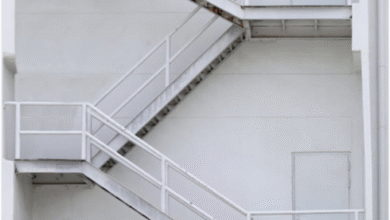Red Flags That Show Your Business Security Setup Is Outdated

Technology is moving faster than ever, but security equipment doesn’t always keep pace. Walk into many offices, warehouses, or retail spaces, and you’ll notice systems that feel like relics of another decade. An outdated setup doesn’t just look old—it leaves real gaps that criminals can take advantage of, often without anyone realizing it until it’s too late.
Old Camera Systems That Can’t Capture Clear Evidence
Grainy footage belongs in the 90s, not in a business environment trying to protect its assets. If cameras are producing blurry, pixelated, or low-light images, they’re no longer serving their intended purpose. In fact, cameras that fail to capture clear facial details or license plates may create more frustration than safety because they can’t provide usable evidence for law enforcement.
Newer video surveillance not only delivers sharp, high-definition footage but often includes motion detection, remote monitoring, and infrared technology. Businesses that continue to rely on outdated cameras face liability risks because poor recordings weaken both security investigations and insurance claims. Clear video is no longer a luxury—it’s an expectation for modern business security.
Keycard Readers That Fail More Often than They Work
Access control should be seamless, yet many companies still rely on old keycard readers that malfunction daily. Employees waste time swiping repeatedly, while doors sometimes unlock unpredictably or fail to register access attempts. Beyond being inconvenient, this inconsistency creates security gaps, as staff may prop doors open or share cards to avoid delays.
Modern systems tie access control directly into digital records, producing reliable entry logs while improving overall safety. If readers are outdated, they can’t integrate with mobile access, biometric options, or remote management tools. This leaves businesses with limited oversight and too much dependence on unreliable technology. An efficient reader system is central to strong business security, and any sign of failure should not be ignored.
Alarm Panels Showing Frequent False Alerts
False alarms may seem harmless, but repeated incidents train people to stop paying attention. An alarm system that regularly triggers without cause desensitizes employees, emergency contacts, and even local law enforcement. Each unnecessary alert undermines the credibility of the system, making a true emergency easier to overlook.
Modern alarm panels connect with advanced sensors, monitoring stations, and mobile alerts to reduce unnecessary disruptions. If an outdated system creates constant false triggers, it becomes a liability rather than an asset. Over time, it costs businesses in fines, wasted staff time, and diminished trust in the system. Reliable alerts are vital for protecting property and ensuring employees take security seriously.
Wiring and Hardware That No Longer Meet Compliance Standards
Regulations around workplace safety and security systems change, but many companies don’t realize their wiring and hardware have fallen behind. Old cabling can’t handle higher data speeds, and outdated panels may not meet fire and safety codes. This isn’t just inconvenient—it can put a company out of compliance with insurance requirements or local regulations.
Up-to-date infrastructure allows for better performance, stronger network connections, and future upgrades without costly replacements. Neglecting hardware creates bottlenecks that impact surveillance quality, alarm responsiveness, and integration with modern tools. Businesses should regularly review their compliance status because falling short puts both operations and liability protection at risk.
Entry Logs Missing Consistency and Accuracy
An access log should be a reliable timeline of who entered and exited at any given time. Outdated systems often create incomplete, inconsistent, or inaccurate records. This becomes a problem if theft occurs or disputes arise, as investigators are left without solid data to track activity.
Current access management systems store logs digitally, with real-time updates that administrators can review from anywhere. Without this level of precision, companies risk internal threats going unnoticed. Strong record-keeping supports accountability and strengthens overall business security, while unreliable entry logs create opportunities for breaches.
Surveillance Blind Spots Ignored During Daily Operations
Even the most advanced cameras can be useless if they’re positioned poorly. Many businesses have blind spots where cameras never capture activity—dark corners, stairwells, or loading docks. Criminals notice these oversights quickly and take advantage of them.
Regular security audits help identify and correct these weak points. Expanding coverage with strategically placed cameras or upgrading to wide-angle lenses eliminates the areas where incidents can occur undetected. Blind spots left unaddressed reduce the effectiveness of an entire surveillance system, making proactive adjustments essential.
Access Points Left Unmonitored During Overnight Hours
An office may seem secure during the day but turn into a different environment at night. Access points such as side entrances, loading docks, or employee doors often go unwatched after business hours. This gives intruders opportunities to slip in without immediate detection.
Smart business security solutions now include real-time alerts for after-hours activity. Motion sensors, remote video access, and monitored alarms provide immediate notifications if someone tries to enter at night. Companies relying on outdated systems that fail to monitor overnight traffic leave themselves vulnerable to break-ins and theft.
Maintenance Records Showing Gaps in Regular Servicing
Even the best equipment fails without maintenance. Missing records of service, skipped inspections, or years of dust-covered hardware are signs that security has been neglected. This isn’t just about equipment lifespan—it’s about ensuring systems function correctly when they’re needed most.
Scheduled maintenance identifies failing parts before they break and ensures systems stay compliant with current standards. Companies that lack thorough maintenance records run the risk of system breakdowns at critical moments. Reliable servicing protects the investment in business security technology and keeps all systems running at peak performance.





